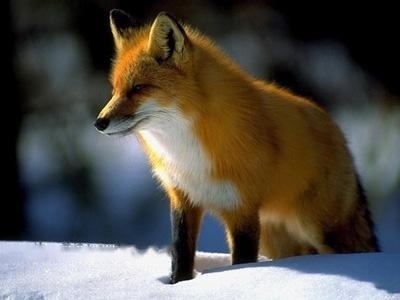
Red Fox
Mating between January and February every year, male foxes fight fiercely for female foxes. The gestation period is about 2 months, and the male and female jointly raise the cubs,
Alias guinea pig, Dutch Rat, Colorful Dolphin, guinea pig, Black Dolphin
English name guinea pig
weight 400-700g
Size Medium
Hair Length Shorthair
Origin South America
Price 20-260 yuan
| Stickness: | Desire : | |||
| Hair loss: | Body Odor: | |||
| Beauty Frequency: | Kids Friendly: | |||
| opposite Friendly people: | Animal Friendly: | |||
| Amount of exercise: | Trainability: | |||
| saliva level: | Cold Hardiness: | |||
| Heat Resistance: | City Fitness : |
History: Their ancestors came from the Andes Mountains in South America, based on biochemical and Hybrid analysis, which is the domesticated descendant of a closely related species such as the white-rumped guinea pig (C. aperea), the bright guinea pig (C. fulgida), or the prairie guinea pig (C. tschudii). Therefore, this animal no longer exists in nature12. Guinea pigs play an important role in the indigenous folk culture of South America. They are not only a source of food, but also a source of medicine and sacrifices in religious ceremonies. Guinea pig is the general name of the family Rodentidae, named after its fat, clumsy and pig-like head. Also known as. There are 5 genera and 15 species in the guinea pig family, which are specialty products of South America. Inhabits rocky slopes, grasslands, forest edges and swamps. They live in burrows and gather in small groups of 5 to 10. They hunt for food at night, mainly eating the green parts of plants. Breeding all year round, 1-7 litters per litter. Normal 2-4 litters have the lowest 1 litter and the highest. 7 tires.
|
Origin: The origin is Peru, South America. The natural food is grass, plant roots and fruit seeds. It is an absolute vegetarian. The wild body is slender and flexible, and has long been regarded by humans as chubby due to lack of exercise due to eating, laziness, and lack of exercise, which is very attractive. Guinea pigs like to pack together, because living together in the wild increases the chance of spotting an enemy. Communicate with each other through small calls. |
Personality: Smart, lively, docile, fat and cute, timid and easily frightened, sometimes squeaking, prefers a dry and clean living environment. They love to eat, sleep, and breed, which is where they are similar to pigs in the usual sense. The main food is weeds, and it likes to eat grass and vegetable leaves. Coupled with a point of concentrated feed to gain half the weight. In winter, corn stalks, wheat stalks, straw, peanut seedlings, etc. can be crushed and added with bran to meet the needs of growth. |
Criteria: It is a prized flesh-and-blood multipurpose herbivore. The body is stubby and round, the head is large, the eyes are large and round and bright, the ears are round, the upper lip is split, and the ears are short; Many varieties are cultivated artificially. Except for the Angola guinea pig, which is long-haired, the body hair is short and shiny. Body hair is black, white, gray, brown, flower color, etc., and also has various colored markings. Biological characteristics 1. Likes to live in groups, big head, short neck, round ears, no tail, full body coat, short limbs, four toes on the front limbs, three toes on the hind limbs, There are sharp short melons, some catch people, and they don't like climbing and jumping, so they can be raised in small concrete pools without lids. Habits are docile, timid and easily frightened, and sometimes make squeaking screams, prefer a dry and clean living environment. 2. The sense of smell and hearing are well developed, and they have a very high response to various stimuli, such as sound, smell and sudden changes in temperature, etc., so they are prone to occur in turbid air and cold environments pneumonia, and cause miscarriage, and it is easy to miscarry when frightened. 3. Guinea pigs are herbivorous animals with well-developed chewing muscles and a very thin stomach wall. The cecum is particularly enlarged, accounting for about 1/3 of the volume of the abdominal cavity. How prone to diarrhea in rabbits. 4. Guinea pigs eat a lot and have a strong appetite for what they are used to, but they are especially sensitive to spoiled feeds, so they often reduce or waste food, and even cause miscarriage. It is also particularly sensitive to antibiotics, and it is easy to cause death and enteritis after administration. For example, the use of penicillin, regardless of the dosage and the route, can cause small intestine and colitis, and even cause death. The sensitivity to penicillin is 1000 times higher than that of mice, so special care should be taken when treating with penicillin. In contrast to rats and mice, it eats less and moves less at night. 5. The guinea pig is a late-growing animal, that is, the gestation period of the female mouse is longer, 63 (59-72) days, the embryo is fully developed in the mother, and it has fully grown after birth, and the whole body is covered with hair. , eyes are open, ears are erect, and permanent teeth have been formed. One hour after giving birth, he can stand and walk, and he can eat soft food for several hours. After 2 to 3 days, he can suck breast milk and eat green fodder or mixed feed under the care of mother mice. , grow rapidly. |